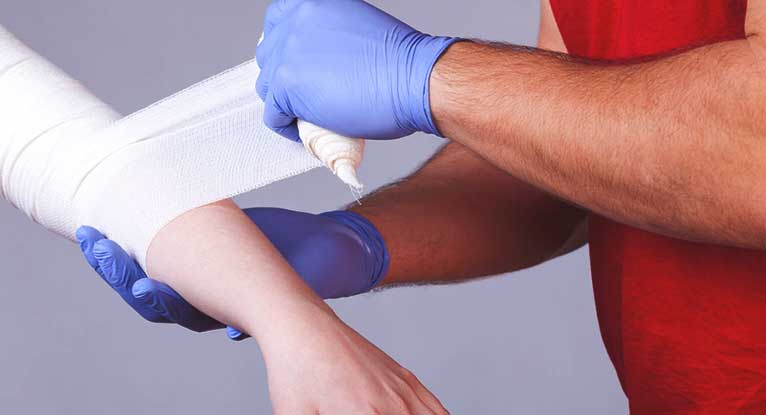

It can also result in sepsis, if these microbes enter your bloodstream, which can be life-threatening. This can result in minor or severe infections. InfectionsĪ burn is an open wound that allows bacteria and other microbes to enter the body, if not treated properly. If you notice too much redness and don’t see it heal, visit your doctor. Make sure that you address your burn as soon as it occurs. Visit your doctor regularly till your burn heals.
#CHEMICAL BURN SCAR SKIN#
Stretch the affected area gently to prevent the skin from sticking together.Cover the area using a nonstick bandage and a piece of gauze.Rinse it with cool water and let it dry.Talk to your dermatologist about the right silicone gel treatment for your scar. These need to be used consistently for three months for about 12 hours everyday. However, it can soften the appearance of it. Silicone gels to address scarring has become a popular method in the recent past ( 4). They can be used on healing scars (not open wounds). These help in effectively softening a scar. Physiotherapy may help improve your movement in areas that have been tightened after the burn marks. Based on your doctor’s recommendations, you can choose whether or not to go in for surgery. This procedure is an invasive technique that may not suit everybody. It can also help loosen a tight scar that prevents movement of a joint. Surgery can help soften the appearance of your scar and make it less noticeable. Surgery may be used to treat a scar if it is very prominent on your skin or to improve movement. Cryotherapy has shown some promising results in treating keloid scars ( 3). It can be used on keloid scars to soften them before they completely emerge. This technique uses liquid nitrogen to freeze the developing scars. Talk to your doctor about whether or not these injections can be used to treat your burn scars. They work well to reduce the appearance of certain hypertrophic and keloid scars ( 2). Steroid InjectionsĬorticosteroid injections can be used to soften the appearance of a scar. In case you decide on going in for laser therapy, make sure your doctor has experience in scar removal treatments using the same. This can help in reducing bumps and redness associated with scarring ( 1).

Laser light therapy uses UV rays to target blood vessels in the excess scar tissues. Here are some other therapies/treatments for burn marks: 1. This technique involves using the skin from one area (donor) of your body to cover the burned area. These are usually tight garments that may have to be worn for many months till your burn marks heal. Use a piece of gauze to cover your burn mark to prevent infection.įor second/third-degree burns, wearing a compression garment can help heal your skin faster. This will help the wound heal faster and will also reduce inflammation and discomfort. The ideal treatments for burn scars depends on how severe it is and the degree of burns.įor first-degree burns, apply an antibiotic cream to the affected area. These kinds of scars form shiny, hairless bumps on the skin. If you have a contracture scar, you may notice difficulty in moving. These scars usually tighten the skin and muscles. These scars are usually red or purple in color.

Now, here are the types of scars that burns can leave behind: 1. These burns can also restrict joint movement. Along with damaging the layers of your skin, they may also penetrate your skin to reach your tissues and muscle structures. These burns are the more severe kinds of burns. This causes your skin to turn red and get inflamed. Second degree burns damage the first two layers of your skin. You may also notice some redness, pain and inflammation. First-Degree Burnsįirst-degree burns are usually associated with a damaged epidermis (surface of the skin). Types Of Burn Scarsįirstly, let us look at the types of burns: 1. Depending on the depth of the burn, these scars may be temporary and sometimes even permanent. These areas are usually thick and are what we call scars. As your skin heals, it leaves discolored patches of skin on the wounded area.
#CHEMICAL BURN SCAR HOW TO#


 0 kommentar(er)
0 kommentar(er)
